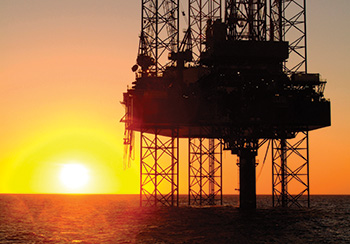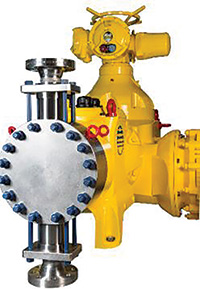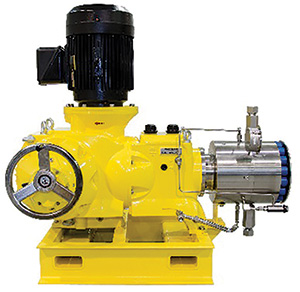As the international demand for oil and gas rises, producers are heavily focusing on extending recovery from producing wells and developing new assets. In the Middle East and North Africa, the national oil companies (NOCs), which administer most of the oil and gas reserves in the region, are making plans to triple their production to keep up with current demand. This growth has altered the mix of onshore and offshore production in the region. What was once an 80 percent onshore, 20 percent offshore ratio has now shifted to a 60-40 mix. New fields in the Arabian Gulf and in deeper waters off the coast of North Africa have spurred the race offshore. Whether onshore or off, the equipment must always be made to exacting standards to provide long-term reliability.
Metering Pump Reliability
 As oil & gas producers look to triple their production, offshore end users will need more powerful pumps. (Article images courtesy of Milton Roy.)
As oil & gas producers look to triple their production, offshore end users will need more powerful pumps. (Article images courtesy of Milton Roy.) Featuring a metallic liquid end with a PTFE double diaphragm, this pump is designed for high pressures (above 400 bar) and is ISO 29001 certified.
Featuring a metallic liquid end with a PTFE double diaphragm, this pump is designed for high pressures (above 400 bar) and is ISO 29001 certified.Offshore Pumping Demands
 This specialized metering pump features a vertical motor configuration and metallic liquid end with metallic double diaphragm. The pump is designed for pressures up to 1,380 bar.
This specialized metering pump features a vertical motor configuration and metallic liquid end with metallic double diaphragm. The pump is designed for pressures up to 1,380 bar.Right Place, Right Time
Several factors in the Middle East and North Africa are colliding to create a “right place, right time” scenario for new equipment. Newly discovered fields in deeper offshore environments require more exotic materials in Saudi Arabia, Kuwait, Qatar, United Arab Emirates and Oman. In addition, the industry’s infrastructure throughout the region is due for upgrade and modernization. Production facilities that have been running since the 1970s now require upgrades to accommodate new safety rules and regulations. The need for modern equipment with updated design and safety features will continue to grow, as oil and gas producers find their product where it is most abundant—in deeper waters, all around the globe.5 Challenges for Offshore End Users in the MENA Region
- On an offshore rig, footprint is everything. Offshore rigs must operate with limited capacity compared with onshore wells, meaning higher demand on fewer pumps. Equipment footprint is even more restricted on stimulation vessels, which can often accommodate only four to 10 pumps.
- The closer the offshore rig is to a port or other docking station, the better. Unlike onshore operations, offshore rigs require that ships carry production materials, crew members and their supplies. Without careful planning, operators can find themselves stalled without the right resources.
- Horsepower is another high demand for offshore wells. The required horsepower, however, depends on the well depth. Traditional oilwells will not require as much horsepower as deep-water projects, which are becoming more common as the MENA region expands production.
- Larger and deeper offshore wells often require advanced stimulation vessels. In fact, with the advances in stimulation technology, vessels are sometimes preferred over rigs. Operators on vessels can adapt to the needs of the well and change direction more quickly than on rigs.
- While the MENA region turns to extended recovery techniques for its mature wells, it is important to remember that all wells eventually run dry. A service company may be the answer to avoiding hefty penalties for well abandonment. More than 20,000 wells have been abandoned worldwide.
Source: Upstream Pumping Solutions

